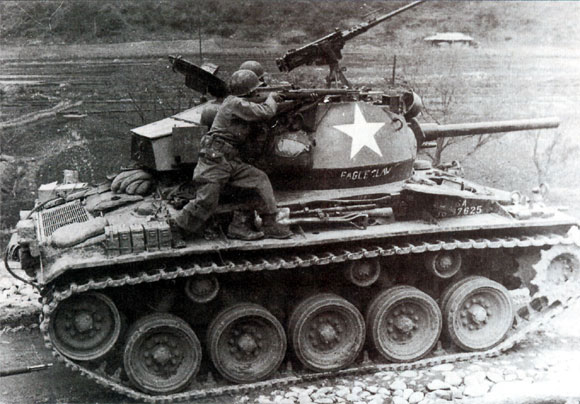We are starting a new batch of the Inside the Tanks series with a very special episode. We are going to take a slightly different look at not one, but two tanks: the M5 Stuart and the M24 Chaffee. Both of them American and both extensively used by other armies.

The Light Tank M24 is an American light tank used during the latter part of World War II and in postwar conflicts including the Korean War and, with the French, in the War in Algeria and the First Indochina War. In British service it was given the service name Chaffee, after the United States Army General Adna R. Chaffee, Jr., who helped develop the use of tanks in the United States armed forces. While long removed from American and British service, it is still found in service as a light tank in third-world countries, along with other hardware from that era.
British combat experience in the North African campaign identified several shortcomings of the M3 Stuart light tank, especially the performance of its 37mm cannon. A 75mm gun was experimentally fitted to an M8 Howitzer Motor Carriage – an M3 tank with a larger turret – and trials indicated that a 75 mm gun on the M5 light tank development of the M3 was possible. The M3/M5 design was dated though, the 75 mm gun reduced stowage space, and the armor was insufficient.
The M24 Chaffee was intended to replace the aging and obsolete Light Tank M5 (Stuart), which was used in supplementary roles.

M5 entered production in April 1942. By June 1944 a total of 8,884 vehicles in two variants had been produced. The tank was used in all theaters of war.
The turret, main hull, tracks, suspension system, almost everything including equipment, were derived from the M3A3, so the production lines needed only a few changes. The new engine and transmission arrangement saw the rear part reshaped and steel RHA was used, along with welding, throughout construction. A 0.3 cal (7.62 mm) was placed in the right side of the glacis and was operated by the assistant driver, who sat on the right. Both his and the driver’s seats could be elevated in order to be able to ride with their heads out of the hatch. The assistant driver and driver were given dual steering brake controls, and floor mounted accelerator pedals.
The M3A1 turret was adopted for the M5, the “short” model characterized by the roof machine gun placed at the rear. The gunner needed to stand behind, exposed to enemy fire. This was corrected with the M5A1. The turret had a Westinghouse gyrostabilizer and oil-gear power traverse. Thanks to the new powerplant and lower drive shaft, turret traverse systems could be mounted under the turret floor, freeing space in the process. The turret was equipped with a M23 gun mount and roof mounted M4 periscopic sight for the gunner, under an armored cover. There was originally to be a telescope left to the gun, and the port was welded shut.
Despite criticism about its lack of firepower, the 37 mm (1.46 in) was kept. It’s high-velocity performances made it able to pierce the armor of similar light tanks. As a scout tank, it was mostly confronted with infantry, and the three Browning machine-guns were also an argument.
In all, 2075 M5s were produced (including the British versions) and the first M5s to see combat action were part of the November assault in North Africa (operation Torch). Until then, all the M5 produced were intensively used for training in relevant locations, like the Indio desert training camp in California.
So let us have a look around them both with the World of Tanks expert – Richard Cutland
